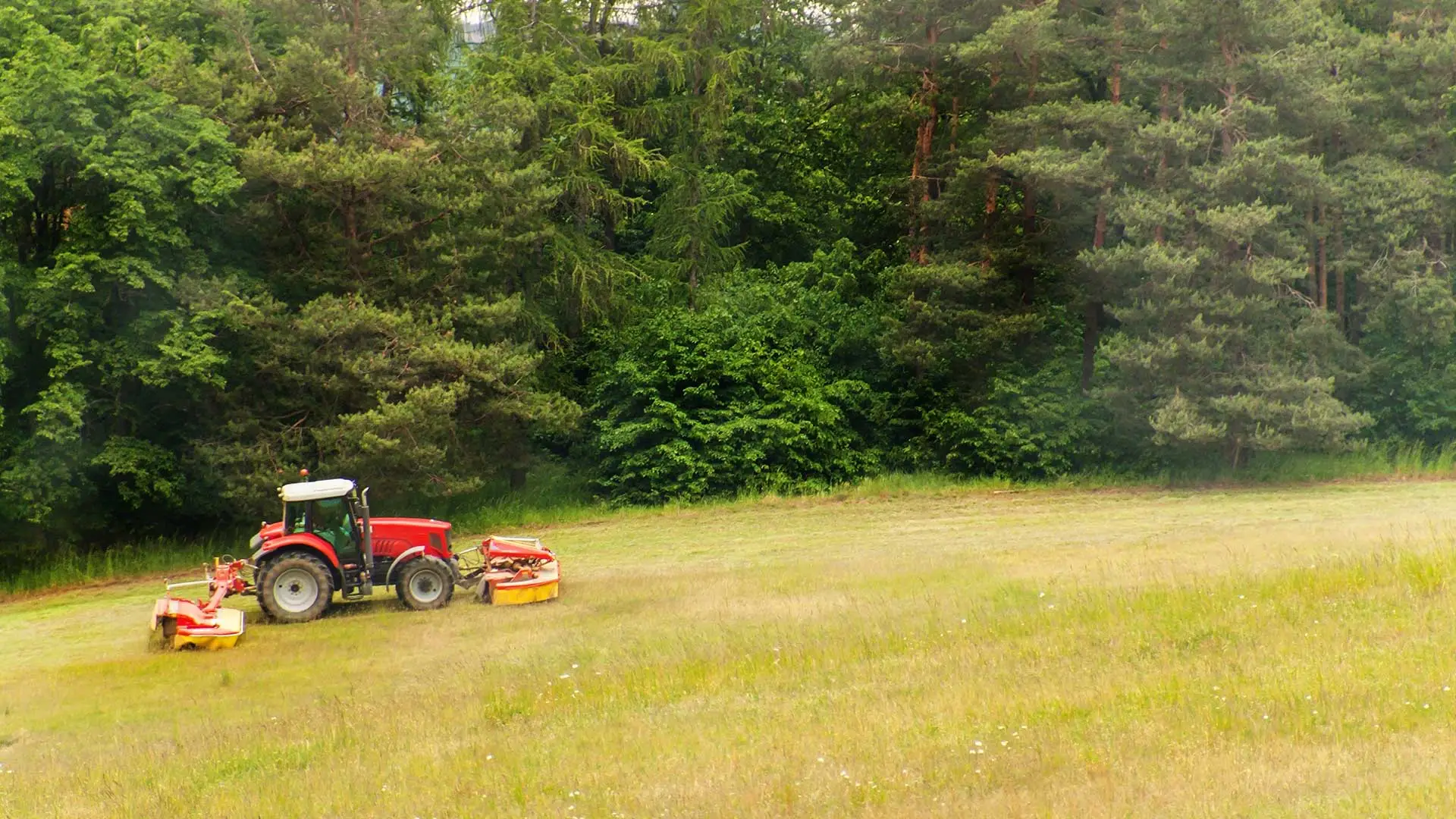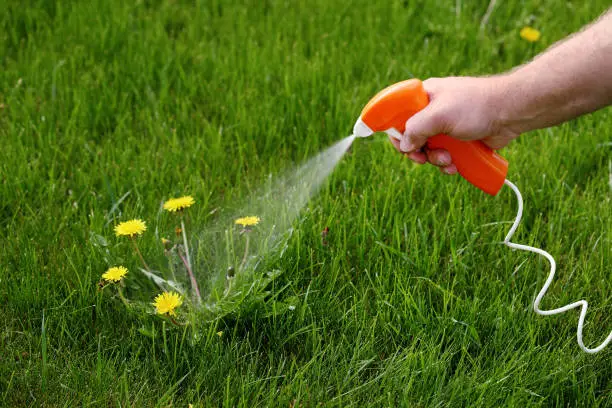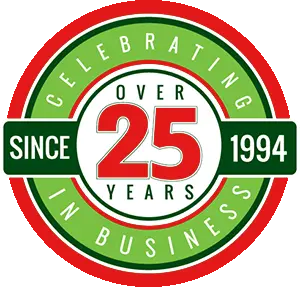When you Google, "how do you kill weeds in grass", you get solutions like RoundUp, horticultural vinegar, boiling water, salt water, and gasoline. While all those suggestions are true, they also kill EVERYTHING as a result. Far too often we get phone calls from people who have sprayed weed killer on their lawns and the result is white/yellow patches everywhere. That's because the product they used killed grass and all.
Our suggestion, only use those products on driveways, back alleys, rock patios, or gravel pads where there isn't any grass. As for your lawn, hire a professional that knows how to remove weeds and prevent them in the future.
Aerate Anually
Over time, foot traffic and increased pressure on your lawn results in hard, compacted soil. Compacted soil doesn't allow for water and nutrients to penetrate the roots of the grass -- aeration fixes this issue.
When you aerate, small cores of soil, about the size of your index finger, are removed from your lawn and then left there to decompose. By removing these cores, you are relieving the soil compaction and opening up a way for the roots to receive the water, nutrients, and seeding that it needs.
Aeration is one of the best practices you can do for your lawn, but we only recommend this to be done in the fall. Aerating in the spring can open your lawn up to weed germination.
Fertilize Your Lawn
With high quality fertilizer you can give your lawn the nutrients it needs to reach levels of optimal health and thrive.
Linnemann Lawn Care and Landscaping's Seven-Step Program fertilizes, treats weeds & controls lawn insects. This program is completed in seven steps and supplies your lawn with everything it needs to be healthy all year. The steps include:
- Step 1: Crabgrass prevention applied with slow-release fertilizer helps to control Spring crabgrass and feeds your lawn. We will spray for any early emerging weeds.
- Step 2: Application of broadleaf weed control to kill off problem weeds such as dandelions, chickweed, clover, and other broadleaf weeds.
- Step 3: Insect control helps to control grubs, aphids, stink bugs and other pests. This is applied in conjunction with step 4.
- Step 4: A slow-release fertilizer treatment is applied, plus we'll spot spray any broadleaf weeds.
- Step 5: A late Summer slow-release fertilizer treatment is applied plus we'll spot spray for additional broadleaf weeds.
- Step 6: An application of broadleaf weed killer is applied to control any late season emerging boradleaf weeds.
- Step 7: A Winterizer fertilization treatment helps get your lawn ready for Spring green-up, while we again spot spray any additional weeds.
Give Your Lawn Sufficient Water
Weeds thrive and grown in dry weather conditions. To ensure they don't thrive, setup a watering schedule for your lawn. Our recommendation, watering your lawn for 30 minutes, at least three times per week. This will give your grass a chance to grow and fight back against the weeds.
Overseed After Aeration
Grass is an organic entity that grows and eventually dies (read more about the life cycle of grass here). Overseeding after aeration allows the grass seed to settle into the soil holes left behind by the aerator. This in turn, introduces your lawn to new, healthy grass and gives the existing grass a push to be more resilient against weeds.
Overseeding is the process of spreading grass seed across your property. The four benefits of overseeding is that it:
- Introduces new grass growth that can perform better in the Spring and/or in the cold days of winter.
- Brings about new strength to the existing grass, giving it the resistance necessary to fight diseases that can bring a beautiful lawn to an end.
- Reduces the amount of weeds.
- Gives your existing lawn a facelift.
Prevention is the key to maintaining a robust and healthy lawn. If your home or business needs lawn care, then contact Linnemann Lawn Care and Landscaping today at (618) 939-4769 to set up an estimate on our seven-step fertilization and weed control program. We provide services to residential and commercial properties throughout the areas of St. Louis, Columbia, Waterloo, Millstadt, and nearby Illinois communities.





Comments (0)
Thanks for your comment!
Thanks for your feedback! Your comments have been successfully submitted! Please note, all comments require admin approval prior to display.
Error submitting comment!
There is a problem with your comment, please see below and try again.